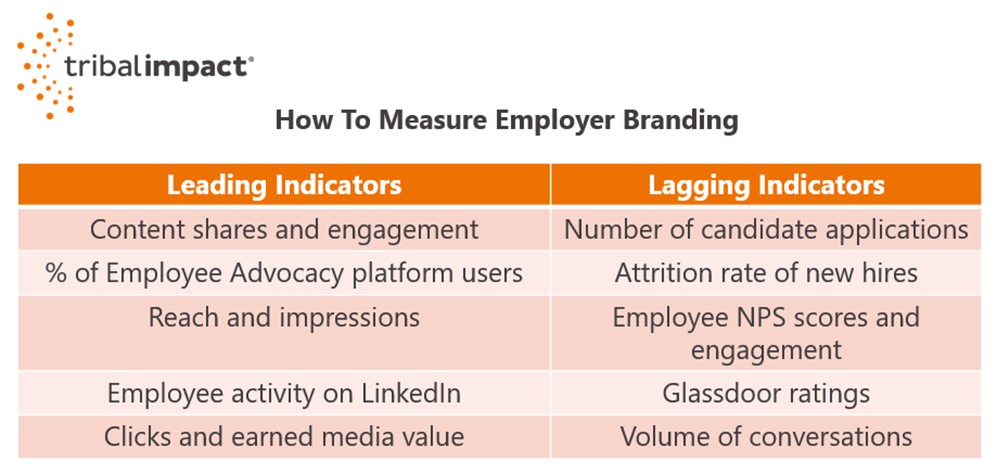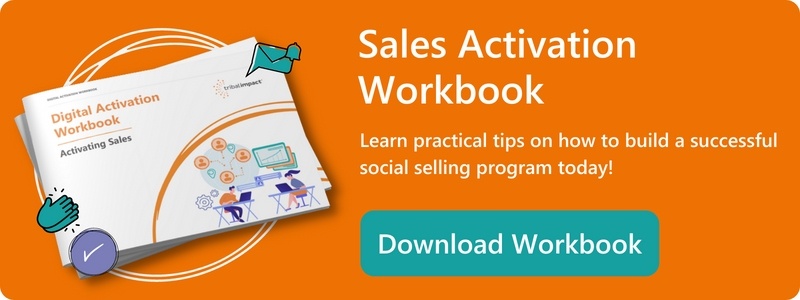When it comes to employer branding, understanding and effectively measuring its impact is crucial. Yet, we've noticed that traditional methods fall short in today's dynamic, social media-driven landscape.
It’s time for a shift where employer branding professionals adopt a marketer’s perspective, focusing on both short-term and long-term results. This approach is essential for moving beyond the pilot stages of employer branding programs, which often plateau due to a lack of demonstrable impact.
Traditional methods, such as Ipsos research surveys, offer much less frequent feedback compared to real-time insights from social media.
By aligning employer branding strategies with contemporary measurement techniques, employer branding professionals can present a compelling case to C-Suite executives, showcasing the immediate impact and securing further investment in these programs.
So, how do we bridge this gap and prove the case for employer branding to move beyond the initial pilot stages? Read on as we explore the role of leading and lagging indicators.
Leading Indicators: Measuring at Pilot Phase
Nowadays, employer branding leans heavily on the power of employee activation on social media, primarily through employee advocacy.
It's a symbiotic relationship: a strong employer brand fosters a positive organisational reputation, which in turn, inspires and empowers employees to actively promote and endorse their company.
This cycle of positive reinforcement is key to building a robust employer brand.
Leading indicators serve as early signals to demonstrate the effectiveness of your program. They play a key role in building your business case for further investment.
Leading Indicators
Use these leading indicators to assess whether your strategies are on the right track. They should be monitored frequently and include:
- Content shares and engagement
- Active user percentages on your Employee Advocacy platform
- Reach and impressions
- Employee activity on LinkedIn
- Clicks and earned media value
Activating your employees on social media is a process. It evolves and strengthens over time, influencing both our immediate actions and long-term outcomes.
Use these early indicators to gain buy-in and communicate how the next phase will be measured through lagging indicators.
Lagging Indicators: Moving Beyond the Pilot Phase
Many employer branding programs struggle to move beyond their initial pilot phases. To overcome this, it's vital to demonstrate the business impact of these initiatives using lagging indicators.
It's much like embarking on a journey towards a healthier lifestyle or training for a marathon – results aren't immediate but gradual and impactful.
These include:
- Number of candidate applications and attrition rates of new hires
- Employee NPS scores and engagement
- Glassdoor ratings
- Conversation volume compared to competitors

Understanding these indicators sets the stage for a deeper analysis of their impact on the business, a point eloquently made by Steve Brand in our recent LinkedIn Live session.
Steve explains that it is more than data points and graphs going up. It’s about giving the business back money and time.
“If it costs £5 to screen an applicant, and EY receives 10,000 fewer applications, they save £50,000. Applicants don’t feel disappointed because they haven’t been screened out, and hiring managers get more time.” - Steven Brand, EY
Statistics to Build Your Case
Compelling stats will also help you build the case for change.
One significant insight from LinkedIn’s Ultimate List of Employer Brand Statistics is that employees sourced through social media are 40% less likely to leave within the first six months. This insight underscores the importance of tracking candidates sourced via social media and their retention rates.
It additionally shares how companies with a strong Talent Brand Index on LinkedIn saw 20% faster growth and 31% higher InMail acceptance rates.
LinkedIn’s Official Guide to Employee Advocacy states companies with socially engaged employees are 58% more likely to attract top talent and 20% more likely to retain them.
These statistics emphasise the importance of a robust employer brand in both attracting and retaining high-quality candidates.
Measuring Employer Branding with Both Leading and Lagging Indicators
By now, you should better understand why measuring your employer branding efforts correctly is essential.
Using both leading and lagging indicators will help ensure your employer branding program doesn’t get abandoned at the early pilot stages where you don't see the business impact. Using these measurements will help ensure your program continues beyond the initial pilot phase.
Before I wrap up, I want to share insights from another expert in the field and friend of Tribal Impact, Anna Bertoldini, who advises looking beyond vanity metrics like likes and follows. Instead, focus on the conversations happening, especially in the comments section.
It’s these interactions that are vital for starting meaningful conversations, building communities, and driving employee advocacy.
To learn more about effectively leveraging your Employer Brand and driving employee advocacy, speak to the Tribal team.

